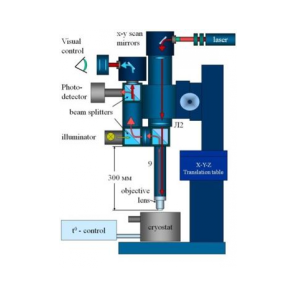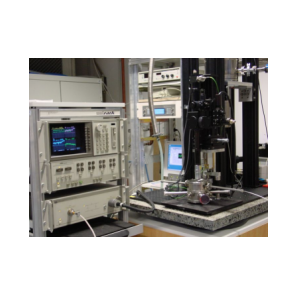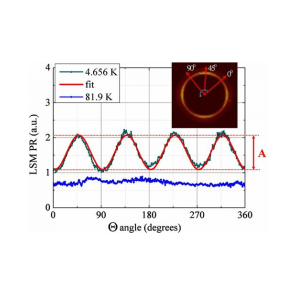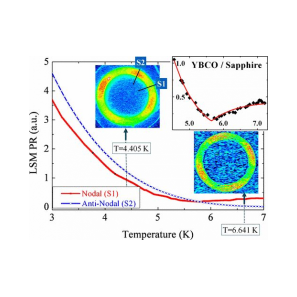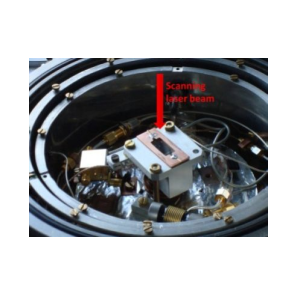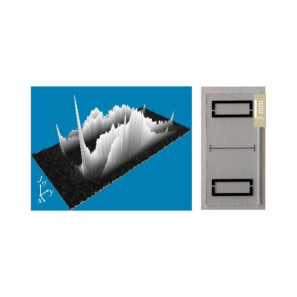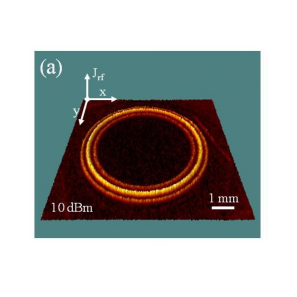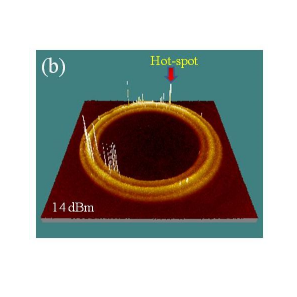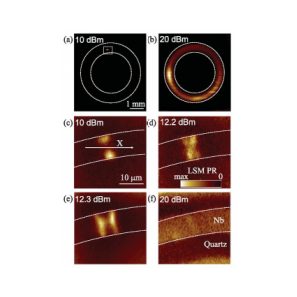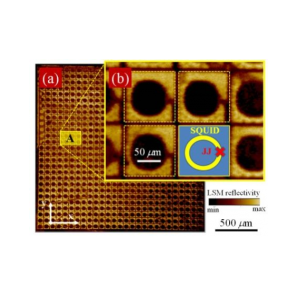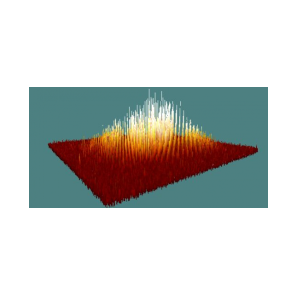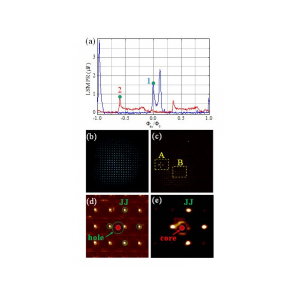Research
Low Temperature Laser Scanning Microscopy
The technique of low-temperature Laser Scanning Microscope (LT-LSM) is a powerful nondestructive instrument for non-contact 2D probing of the local rf current density, J rf (x , y ) in thin superconducting films and microwave devices. Furthermore, the LSM method was successfully used for simultaneous imaging of optical, thermal, and microwave properties of a large-scale (up to 10x10 mm2) superconducting structures in their operating conditions at T < Tc , with micron-scale spatial resolution. 
We have directly imaged the anisotropic nonlinear Meissner effect in an unconventional superconductor through the nonlinear electro-dynamic response of both (bulk) gap nodes and (surface) Andreev bound states. A superconducting thin film is patterned into a compact self-resonant spiral structure, excited near resonance in the radio-frequency range, and scanned with a focused laser beam perturbation. At low temperatures, direction-dependent nonlinearities in the reactive and resistive properties of the resonator create photo-response that maps out the directions of nodes, or of bound states associated with these nodes, on the Fermi surface of the superconductor. The method is demonstrated on the nodal superconductor YBa2Cu3O7−δ and the results are consistent with theoretical predictions for the bulk and surface contributions. 
Sub-wavelength superconducting rf meta-materials have evident advantages over their normal metal counterparts for strong diamagnetism, low-loss and intrinsically nonlinear tunability with temperature, dc magnetic, and rf electromagnetic field. We have demonstrated a nonlinear meta-material that can be switched between low and high transmission by controlling the power level of the incident beam. The origin of this nonlinear response is the superconducting Nb thin film employed in the meta-material structure. We show that with moderate RF power is possible to quench the superconducting state as a result of extremely strong current densities at the corners of the meta-material’s split-ring resonators. We measure a transmission contrast of 10 dB and a change in group delay of 70 ns between the low and high power states.
We have investigated the microscopic origins of nonlinear rf response in superconducting electromagnetic resonators. Strong nonlinearity appearing in the transmission spectra at high input powers manifests itself through the emergence of jump-like features near the resonant frequency that evolve toward lower quality factor with higher insertion loss as the rf input power is increased. We directly relate these characteristics to the dynamics of localized normal regions (hot spots) caused by microscopic features in the superconducting material making up the resonator. A clear observation of hot-spot formation inside a Nb thin film self-resonant structure is presented by employing the microwave laser scanning microscope, and a direct link between microscopic and macroscopic manifestations of nonlinearity is established. 
We have reported direct visualization of spatially localized excitations in an array of coupled rf-SQUIDs forming a magnetic meta-surface for electromagnetic wave propagation. The LSM technique is applied to investigate contributions of individual meta-atoms to the macroscopic dc flux tuned microwave response in the high rf flux limit. The obtained LSM images of the rf current distributions across the SQUID array at zero dc flux confirms a high degree of coherence of the entire meta-surface assuming radially anisotropic nearest neighbor coupling in 2D arrays of rf-SQUIDs. We also find a rich variety of spatially clustered stable dissipative states of the rf-SQUID array due to the non-uniform penetration of magnetic flux in the direction perpendicular to the uniform external magnetic field. Our measurements show that the LSM technique is a powerful tool for spatially-resolved characterization of complicated quantum meta-materials and may be useful for their optimization. 


